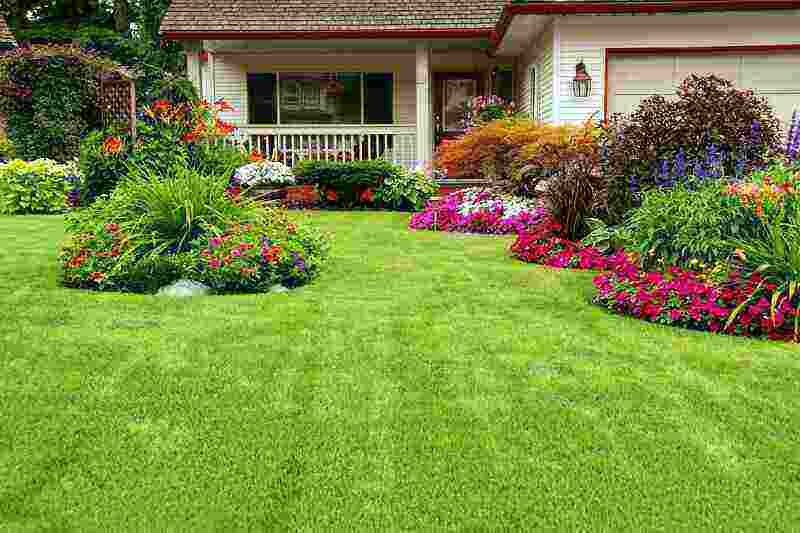Do you love green lawns but struggle to maintain the level you want?
If so, we can help. While most water conservation efforts focus on the summer months, a good lawn keeper pays close attention all year long. The right watering conservation strategies can help you have a lush, green lawn.
Keep reading to learn more.
-
Soil Testing and Preparation
Sampling the soil and testing its composition helps to determine what nutrients and amendments the soil needs. Testing the pH and adjusting it to the correct level ensures the lawn can effectively uptake nutrients. Applying organic soil amendments such as compost can help to increase organic matter in the soil and improve water filtration and retention.
Before laying turf, the soil should be rotavated, watered, and lightly rolled. Undesirable soil, such as clay or stones, should be removed, and the amount of sand increased if necessary.
-
Appropriate Grass Selection
Cool-season grasses, such as Kentucky bluegrass, ryegrass, and fescue, are ideal for northern climates. Warm-season grasses, such as St. Augustine, Bahia, and Zoysia, prefer southern climates. Selecting grass that is suited to the local climate is essential for a healthy lawn.
Ensuring the soil pH is balanced, the lawn is fertilized, and weeds and pests are monitored, will all contribute to the success of a greener lawn. Regular exclusion and mowing at the recommended height will ensure the health of the roots and reduce the risk of disease and pests.
-
Regular Watering
It is important to water as much as is necessary year-round in order to keep a healthy, sustainable lawn. An inch of water a week, spread out over three to four days, is recommended for most grass varieties.
Watering deeply and infrequently rather than shallowly and frequently ensures proper hydration and reduces water waste. Depending on the climate and season, the amount of water used should be adjusted to ensure that the lawn is not over-or under-watered.
-
Mowing Techniques
It’s important to mow often so that the grass doesn’t get too long and cause it to become stressed, which can lead to an unhealthy lawn. It’s also important to mow at an appropriate height, between 2-3 inches. This allows the grass to take in more sunlight, water, nutrients, and air to stay healthy.
When mowing your lawn, the same pattern should be used each time, and the blades should never be allowed to pass over the same area more than two times in one session. Low-powered mowers, reel mowers, and mulching mowers can also be used to help reduce the amount of grass clippings, which can help encourage a thick, green lawn. To get started, contact Lawn Care of Saint Johns today.
-
Fertilization and Weed Control
A well-fertilized lawn will resist damage from excessive traffic and resist diseases like rust. Fertilizer helps plants and grasses achieve their full growth potential while providing a healthy environment for beneficial insects.
Weed control is also essential as it will prevent weeds from taking over the lawn. Pre-emergent weed control should be employed in the late fall to target weeds that can emerge in the spring.
Start Creating Your Green Lawns Today
Creating and maintaining a green, healthy lawn requires a steady commitment of time and effort. Regular maintenance including proper mowing, fertilizing, and watering schedules is essential for any homeowner to ensure a lush, healthy lawn all year round. Act now to create your own oasis and start enjoying the joys of healthy green lawns!
If you found the information in this article useful, then take a look at our other articles on our blog.


